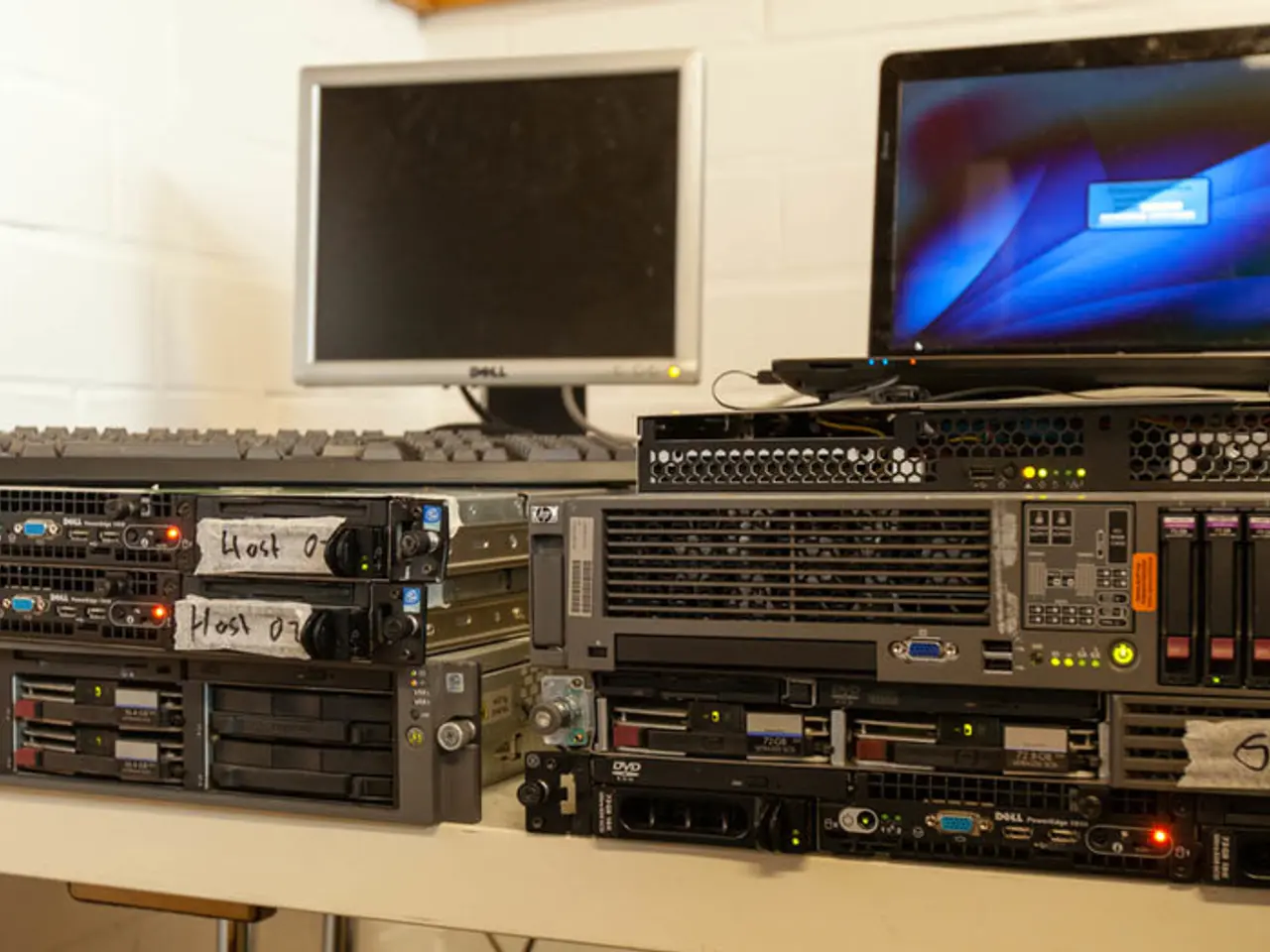Technology Council of Eastern Michigan Gathers for Discussions on Technology and Maintenance
In the ever-evolving world of technology, Artificial Intelligence (AI) and robotics are making significant strides in the logistics and transportation sector. The global AI in Smart Transportation market is on an upward trajectory, with a projected value of nearly $95 billion by 2034, up from $34 billion in 2024 [1].
AI is being integrated into both passenger and commercial vehicles for improved comfort, navigation, and safety, powering autonomous driving, intelligent traffic systems, and logistics optimization [1][3]. However, the sector faces challenges such as data privacy concerns, high upfront costs, and complex regulatory environments, but is expected to grow due to both public and private sector investment [1].
Amazon, a pioneer in this field, has recently achieved a significant milestone by deploying its one millionth robot in operations within a fulfillment center in Japan. Amazon now operates over 300 facilities globally [2][4]. The e-commerce giant has also launched a new generative AI foundation model called DeepFleet, designed to coordinate the movement of its robotic fleet and improve travel efficiency by 10%. This model optimizes robot navigation, reduces congestion, and enables faster, lower-cost deliveries [2][4].
The use of AI in robotics and logistics is enhancing predictive analytics, route optimization, and fleet management, which is also relevant to major logistics companies like UPS [3]. About 40% of US businesses in warehousing and transportation use AI for data analytics. AI-driven predictive maintenance helps avoid vehicle breakdowns and reduces maintenance costs [3]. Additionally, AI synthesizes live traffic, weather, and driver behavior data to create dynamic delivery routes, making operations faster, cheaper, and more environmentally friendly [3].
The sector is also increasingly leveraging robotics for sorting, moving, and delivering goods, with both Amazon and logistics providers leading this shift [2][4]. Nissan, for instance, has recently recalled 480,000 vehicles due to an engine failure risk, while XPO has opened the largest service centers by door count and acreage [5].
In related news, negotiations between Volkswagen and unions have stalled over layoffs and wage disputes, and UPS is reportedly considering offering buyouts to its Teamsters drivers [6]. Furthermore, UPS is in talks with Figure AI to use humanoid robots in its operations, although specific details about the robots or their intended roles are not yet available [7].
As the logistics and transportation sector continues to embrace AI and robotics, it's clear that these technologies will play a crucial role in shaping the future of the industry. Amazon's advancements, especially with its robotic fleet and AI models, set an industry benchmark that may influence competitors and partners alike.
References: [1] Tractica (2021). Artificial Intelligence in Smart Transportation. Retrieved from https://www.tractica.com/artificial-intelligence-in-smart-transportation/ [2] Amazon Robotics. (n.d.). Retrieved from https://www.amazonrobotics.com/ [3] McKinsey & Company. (2020). The rise of AI in logistics and transportation. Retrieved from https://www.mckinsey.com/business-functions/mckinsey-digital/our-insights/the-rise-of-ai-in-logistics-and-transportation [4] Amazon Robotics. (2021). Amazon Robotics deploys its one millionth robot. Retrieved from https://www.amazon.com/about/news/amazon-robotics-deploys-its-one-millionth-robot [5] XPO Logistics. (2021). XPO opens largest service centers by door count and acreage. Retrieved from https://www.xpo.com/news/xpo-opens-largest-service-centers-by-door-count-and-acreage [6] Transport Topics. (2021). UPS Offers Buyouts to Teamsters Drivers as Negotiations Stall. Retrieved from https://www.ttnews.com/articles/ups-offers-buyouts-teamsters-drivers-negotiations-stall [7] The Verge. (2021). UPS is in talks to use humanoid robots from Figure. Retrieved from https://www.theverge.com/2021/7/15/22575425/ups-figure-ai-humanoid-robots-delivery-drones-logistics-automation-future-of-work
Technology is being integrated into both passenger and commercial vehicles, powering autonomous driving, intelligent traffic systems, and logistics optimization. Amazon, a technology leader, has deployed its one millionth robot and developed DeepFleet, an AI model to coordinate its robotic fleet, improving travel efficiency.




